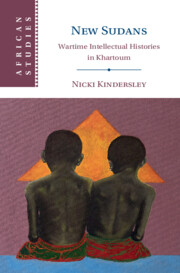Book contents
- New Sudans
- African Studies Series
- New Sudans
- Copyright page
- Dedication
- Contents
- Figures
- Acknowledgements
- Abbreviations
- Maps
- Introduction
- 1 Dar es Salaam
- 2 Building Marginalisation in the Displaced City
- 3 Community Space and Self-Defence
- 4 Alternative Education
- 5 Intellectual Work and Political Thought on the Peripheries
- 6 Akut Kuei and Wartime Mobilisation
- 7 Military Independence and Khartoum’s Warlord Communities
- 8 Return to the South, 2005–2011
- Conclusion
- Bibliography
- Index
- African Studies Series
8 - Return to the South, 2005–2011
Published online by Cambridge University Press: 06 February 2025
- New Sudans
- African Studies Series
- New Sudans
- Copyright page
- Dedication
- Contents
- Figures
- Acknowledgements
- Abbreviations
- Maps
- Introduction
- 1 Dar es Salaam
- 2 Building Marginalisation in the Displaced City
- 3 Community Space and Self-Defence
- 4 Alternative Education
- 5 Intellectual Work and Political Thought on the Peripheries
- 6 Akut Kuei and Wartime Mobilisation
- 7 Military Independence and Khartoum’s Warlord Communities
- 8 Return to the South, 2005–2011
- Conclusion
- Bibliography
- Index
- African Studies Series
Summary
Political possibilities closed down as the war ended in 2005. With the negotiation of the Comprehensive Peace Agreement and the death of the SPLA’s leader John Garang – which sparked riots and racialised murder across Khartoum – many people’s connections and trust in inclusive intellectual and political projects were broken. This chapter briefly surveys the aftermath of the riots and peace process, which saw a massive movement of well over a million Khartoum residents to the south, where they reconstructed a very different set of neighbourhoods that in the late 2000s were often known as New Khartoums. The secession of South Sudan in 2011 was not a panacea or end goal of the long conflicts for many of these returned Khartoum residents. Reflecting discussions with returning residents over 2012 and 2013, the chapter examines the lost possibilities of the projects they undertook in Khartoum, and the closing space for political projects and democratic communities that they discussed and worked for during the war.
Keywords
- Type
- Chapter
- Information
- New Sudans , pp. 288 - 304Publisher: Cambridge University PressPrint publication year: 2025

